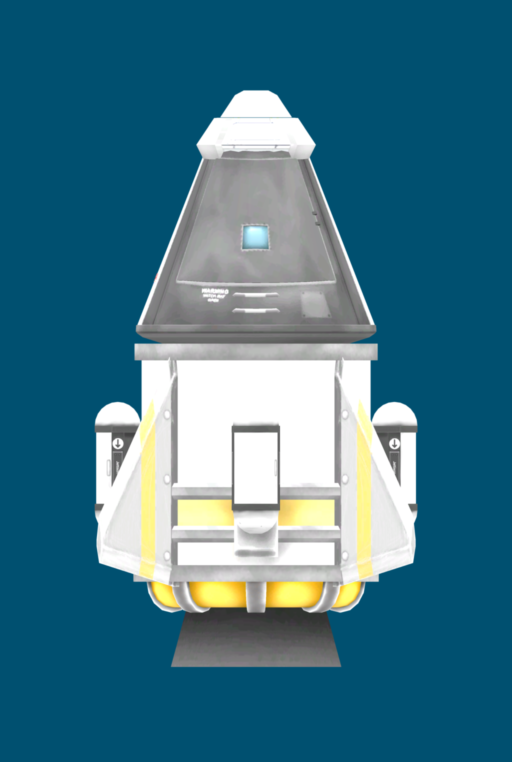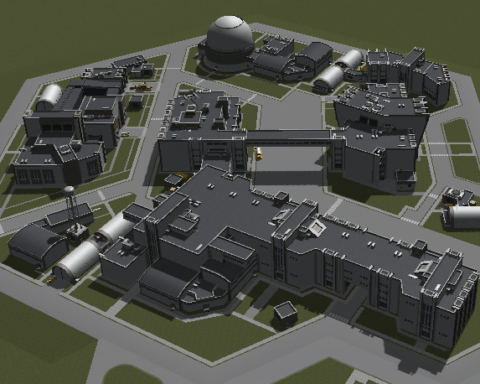The Mark One Anomaly Investigation Board released it’s report on the flight of the Mark One vehicle today, and reveled that a mis-wiring of the RT-5 “Flea” Solid Rocket Booster ignition system triggered the Mk16 Parachute to deploy immediately, rather than during spacecraft descent as planned.
“The flight was scheduled as a five thousand meter mission; however, because of a spacecraft control-system anomaly which deployed the Mk16 Parachute upon vehicle liftoff, the flight was concluded at approximately two minutes ground elapsed time. During the anomaly period, the crew exhibited a calm attitude and deliberate manner in analyzing the problem and bringing the spacecraft back under control; they then performed a nominal impact mitigation manouver. Recovery of the flight crew and the spacecraft was accomplished shortly thereafter. The crew demonstrated satisfactory control of the situation and are reported to be in good physical condition.” -Mark One Anomaly Investigation Report, Executive Summary.
The apparent cause was traced to an inadvertent cross wiring in the spacecraft control systems. When Mission Control sent the command to launch to the pad, circuits at the pad signaled to the Mark One on-board systems to launch. This was supposed to send a pulse to the igniters for the RT-5 “Flea” Solid Rocket Booster, causing it to light and propelling the craft skyward. Later, after the craft had reached it’s highest point in the flight, onboard sensors would enable the impact mitigation circuits, which in turn enabled the Mk16 Parachute to be deployed at the pilot’s command.

This is not what happened, as we all know. A miswiring of the system meant that when the launch command was received, the ignition pulse was sent to both the RT-5 Booster and the Mk16 Parachute. This caused the craft to lift off while deploying the parachute. It is a testament to the quality of the nameless Kerbals who manufactured the parachute that it was able to withstand the punishing exhaust of the RT-5 Solid Rocket Booster.
The parachute provided an off-axis rotation which was enhanced by the exhaust caught in the chute. Once the craft was off course, the thrust from the Solid Rocket Booster pushed the craft even further into the tumble. Only the quick reflexes and rock-hard nerves of the pilot Jebediah Kerman (no relation) managed to save the craft and himself, all the while maintaining contact with Mission Control and reporting back.

The Mark One Anomaly Report indicates that the wiring defect occurred early in the assembly process, shortly after the Mk16 Parachute was installed. Exhibit AIB-354 shows the Mark One Assembly Log compared with the Mark One Assembly Simulation, showing the configuration difference that should have indicated to the personnel that there was an issue with the wiring in the craft. The left side shows the Mark One Assembly Log, the right shows the Mark One Simulated Assembly. This failure to detect the miswiring in the Vehicle Assembly Building was not the last chance to detect the problem however.

The report stated that the Pad crew and Mission Control also missed clear indications that there would be problems with the Mark One as configured. Figure ARB-355 shows on the left side the Mark One Pad Log, the right shows the Mark One Simulated Pad Operations. Note the differences in the STAGE indicator. The report concludes that the majority of the personnel at the Pad and Mission Control were caught up in “Go Fever”, an informal term used at the Kerbal Space Center, used to refer to the overall attitude of being in a rush or hurry to get the mission done while overlooking potential problems or mistakes.
Mission Director Gene Kerman (no relation), was quick to point out that no blame was directed towards Jebediah Kerman. “In fact, the crew demonstrated remarkable piloting skill in overcoming this very serious situation and bringing the spacecraft to a safe landing,” Director Kerman said.
Walt Kerman (no relation), spokeskerbal for the Kerbal Space Center, said that now that the root cause of the Anomaly was known, they were well along in planning the next Mark mission. He would not speculate if Jebediah would be piloting again, or if another Kerbonaut would fly. When asked how quickly the next attempt would be made, Walt stated that it should be relatively soon, as they had most of the required hardware already on hand. “We’ve got lots of the things lying around,” he said, gesturing towards a stack of RT-5 “Flea” boosters stacked outside the Vehicle Assembly Building. “But this time we’ll hook it up right!”












